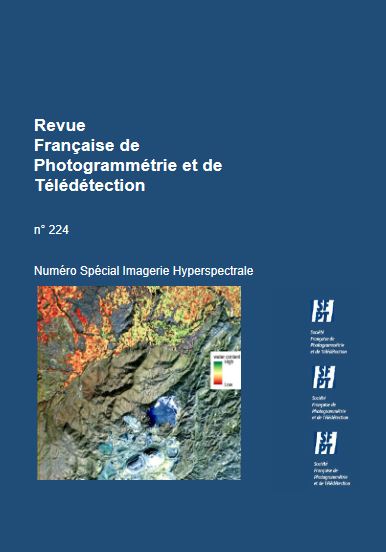Retrospective Des Etudes d’Avant-Projets d’Imagerie Hyperspectrale Menées Aa CNES Pour Les Besoins Scientifiques
Keywords:
Spectro-imaging, hyperspectral imaging instruments, space system, biodiversity, signal modeling, fusion, radiometric unmixing.Abstract
Between 2009 and 2022, the National Center for Space Studies conducted and funded preliminary studies (phases 0, phases A and phase B1) in order to meet the needs expressed mainly by the national scientific community and by the Defence which uses imagery data at high spatial resolution hyperspectral imagery (mainly airborne) for research purposes in various thematic areas. High-level requirements of the mission group set up during the HYPXIM preliminary project are, spectral-imagery in the VNIR-SWIR domain (400-2400 nm) with contiguous narrow bands at last 20nm wide for a spatial resolution of less than 15m. During the preliminary studies, three main scenarios were studied and are presented in this article : a) HYPXIM-P (P for Performance) strictly meets the needs expressed with a “mini » satellite class (600 kg at launch), orbiting in a sun-synchronous orbit at 660 km, which makes it possible to reach a spatial resolution of 8m in hyperspectral, 1.8m in Panchromatic for a field of 15 km; b) HYPXIM-C (C for Challenging) is made up of 2 identical 200kg « micro » class satellites in orbit around 650 km. An innovative compact instrument authorizes a spatial resolution performance to 15m in hyperspectral, 3,2m in Panchromatic for a field of 30km; c) HYPXIM-D (D for Demonstrator) accommodates the same instrument as HYPXIM-C (80kg / 110w) but, in addition, its spatial resolution performance is identical to that of HYPXIM-P but for a field limited to 8-10 km in due to its orbit, called VLEO, at 360 km. This particular orbit preserves the revisit capacities of 3-5 days thanks to a transverse maneuver of 35 °.
It is this last concept, renamed HYPEX2, which was revisited and proposed in 2017 to the call for tenders of ESA EE9 by a scientific community enlarged at European level. In 2019, this concept was renamed BIODIVERSITY by the national scientific community and was selected as one of the 4 main projects in France. In addition, opportunities for international cooperation have appeared on more targeted missions, perhaps less ambitious, but responding to severe cost and mass constraints. In this context, CNES is exploring resolutely innovative concepts in the satellite class below 50kg. This study is the starting point for various actions that have been deployed in various settings in order to cover the whole issue: state of the art of nano-micro satellite technologies, physical signal modeling, parametric sensitivity studies in image quality, algorithmic studies, instrument pre-sizing, and satellites. A point on the most advanced works is presented in this article.
Downloads
Published
How to Cite
Issue
Section
Categories
License
Copyright (c) 2023 Marie-José LEFEVRE-FONOLLOSA

This work is licensed under a Creative Commons Attribution 4.0 International License.


